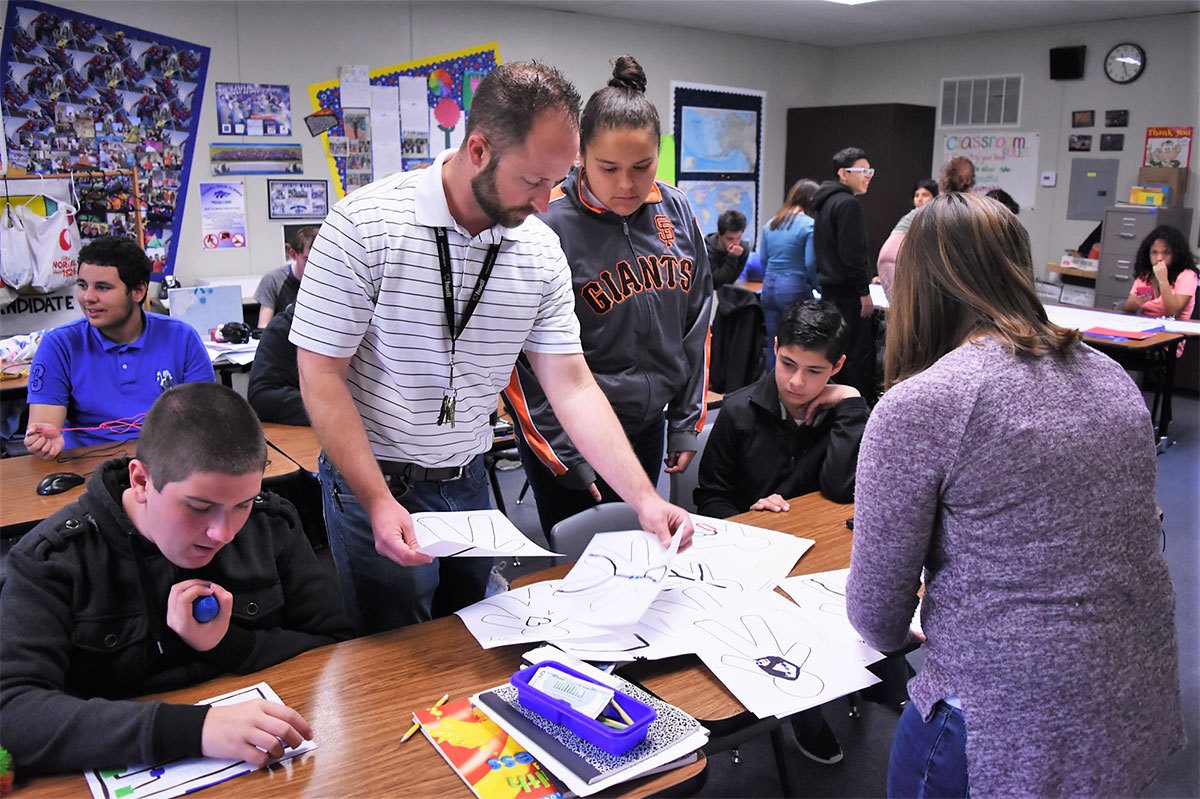class act: Best practices in action
class act:
Best practices in action
class act:
Best practices in action
hat started as a conversation between two high school teachers has turned into a buzzworthy model of cross-curricular collaboration in the heart of California’s Central Valley.
Inside Manteca Unified School District’s Sierra High School, science teacher Steve Unterholzner can be found instructing STEM activities not only in his classroom, but in Matthew Tate’s special education classroom. The pair, agreeing that students in special education programs deserve the same opportunities as all students, started using a collaborative approach a couple of years ago.
The partnership came together organically from a growing culture of collaboration. Unterholzner said the idea was put into action with a mindset of effort and willpower. “I guess the biggest thing for us was ‘just do it,’ like Nike says,” he said. The partnership has since grown in both the classroom setting and to include special education students in the district’s science bootcamp.
“It’s evolved from just using one type of project or one device like an Ozobot (a basic coding robot) to using all kinds of different STEM hands-on materials,” Tate said.
Unterholzner carves out prep time from his own general classroom science course schedule to work with the students in Tate’s class. He admits it was an adjustment to begin teaching in a special education classroom. “As a regular ed teacher, walking into Matt’s classroom for the very first time, I was very nervous, and I know the kids were a little bit nervous.”
But just as the instruction and teamwork has evolved, so have those relationship dynamics. Unterholzner said he and Tate’s students have opened up, exchanging hellos and shaking hands in class and around campus, leading Unterholzner to even consider himself a bit of a rock star.
“It was really interesting to see how I helped Steve with the social dynamics of the classroom, and Steve helped me with implementing science and STEM into the programming,” Tate said. “So, we just took our two areas of expertise and kind of blended it together.”
Beyond the growth for their students and themselves, Unterholzner and Tate said other Sierra High and district staff have taken notice. “We are getting a little bit of a buzz with other teachers wanting to do something like that,” Tate said. “And it doesn’t have to be just with special education or with science. It’s just cross-curricular planning and collaboration and not being afraid to step out of their comfort zones.”

“They’re taking what they’ve done, and kind of molded it, and now are including more teachers across the district to roll it out to their students,” added Victoria Brunn, Manteca USD director of community outreach. Brunn said the duo has also spoken at two conferences on the unique collaboration in hopes of inspiring similar efforts.
“I think we both would love to see other groups of teachers in our district, let alone outside our district, do the same thing,” Unterholzner said.
For him and Tate, the core concepts and beliefs behind their collaboration represent the virtues of serving all students equitably, for both the benefit of the individuals and for the school.
“The more people who get included into those eye-opening experiments, when it comes to team teaching or working with a population at school sites that doesn’t always get enough money or support, it will definitely help the school overall as a whole,” Tate said.
Further, Brunn said such efforts only uplift the benefits that the public school system offers during a time when public schools fight for their space. Parent engagement and participation, in particular, rises to a new level when ingenuity and teamwork come together to serve students who may not traditionally have access to certain courses or experiences.
“For us in public schools, getting that parent to participate is such a critical piece right now,” Brunn said. “Anytime you can highlight a program from different sets of curricular backgrounds, you’re letting that parent know of different programs that exist.”